How Many! Entry 13
'How Many!?' was my response to a colleague, when he relayed a conversation he’d just had with Benni Allan of Níall McLaughlin Architects in January of this year. Níall and his collaborator, Yeoryia Manolopoulou, had the very grand vision of projecting 54 separate images onto the floor of the Ireland Pavilion at the 15th International Architecture Exhibition.
Now, we’re not unused to being involved in projects that utilise a large number of projectors and/or speakers; however, the numbers involved are normally 10-20 for big projects. Over the next 24 hours we had several conversations with Benni, Claire McMenamin, Joanna Karatzas and Eimear Arthur to get a better understanding of the project requirements, and to try to quickly produce some initial budget figures to see what was achievable.
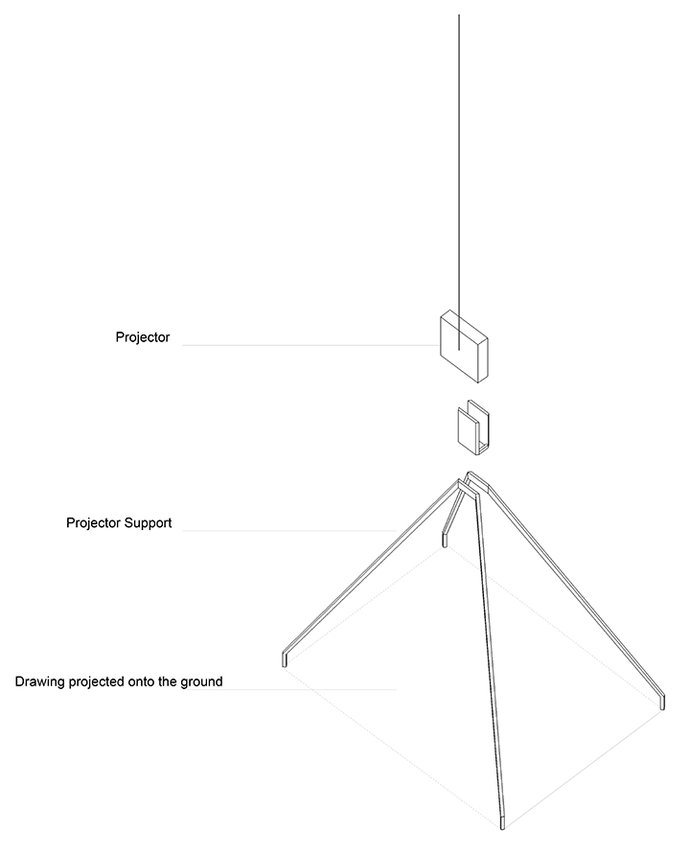
It soon became very apparent that projector choice would be key to the entire project. The fundamental concept hinged upon each projector being supported by its own four-legged tripod (‘quadpod’) at a very low height from the ground. This required two specific lens features: short throw (to allow us to achieve the correct size image from the limited projection distance) and on-axis (where the projector lens is central to the image). With premium projectors using interchangeable lenses, this specification is easy to achieve, but it comes at a cost: a projector body and on-axis lens start at around £3000. Coupled with an almost-equal cost ‘per channel’ of video playback from a high-end media server meant that before we even got to speakers, cable, crew and the many other requirements, the cost was far exceeding the budget.
We supplied the Losing Myself team with our quote and a suggestion to consider 48 projectors rather than 54, as media servers are usually configured in multiples of 4, 8 or 16 outputs. Then, we waited.
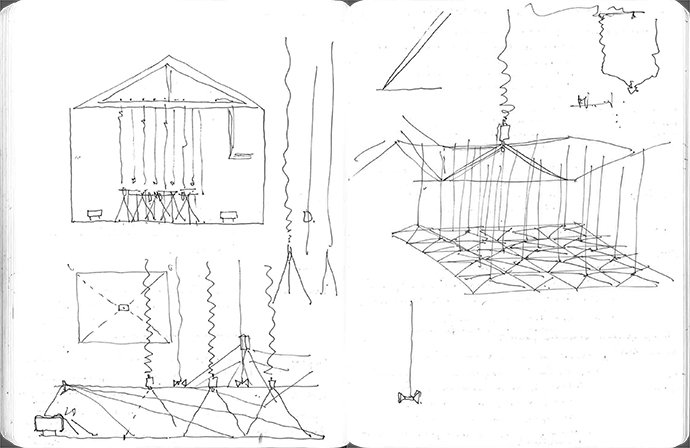
After nearly 2 weeks, Benni came back to us with a request for a re-think. We were hugely over-budget, but Níall and Yeoryia were determined that a simpler version of the highest quality should be achieved. On the 4th of February – after a few very long conversations – a configuration of 16 projectors and 25 speakers was agreed upon.
Over the course of the next month, the design was further refined. However, on more than one occasion we were asked: ‘What if there were 32 projectors…?’ It was clear that a multiplicity of images was a critical aspect of the project, and so we made a very simple suggestion; one that steered the next three months on an entirely different course: ‘Why don’t we project 4 images from each projector, a 2x2 grid on each?’ I’m not sure if the team regret that fateful conversation or not; but it resulted in them needing to do approximately four times as much preparatory work to the video content.
The next month was probably the most challenging. The project had reached a stage where the level of complexity and detail was extremely high and yet changes were still being made. Changes that may have seemed small had quite large knock on effects. Up till now, I had assumed that the hugely complex audiovisual design and the team’s eagerness to employ the largest number of screens at the highest quality was a consequence of their experience of similarly large AV projects. It transpired later that this wasn’t quite the case! However, they did have great vision and huge aspiration – both of which contributed hugely to the success of the installation.
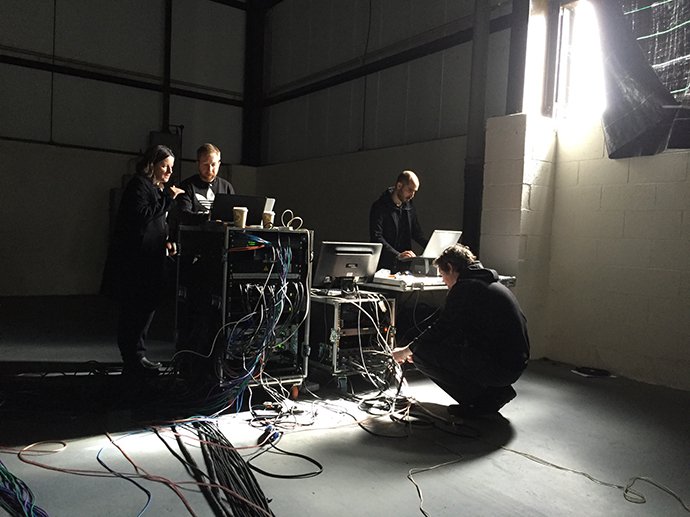
To test the physical and audiovisual aspects of the installation, it was critical to stage a full-scale mock-up. We did so in a 12,000 sq.ft industrial unit very close to our facility in Teesside. A reproduction of the wooden roof trusses that we’d be utilising in Venice was constructed in aluminium and ‘flown’ to a height of 5m. From this, the complicated network of cabling and speakers was suspended. For three days, our team worked tirelessly to complete the installation on schedule. On 21st of April, Niall, Yeoryia, Kevin Pollard (the sound designer) and Claire visited the rehearsal space to see their creation.
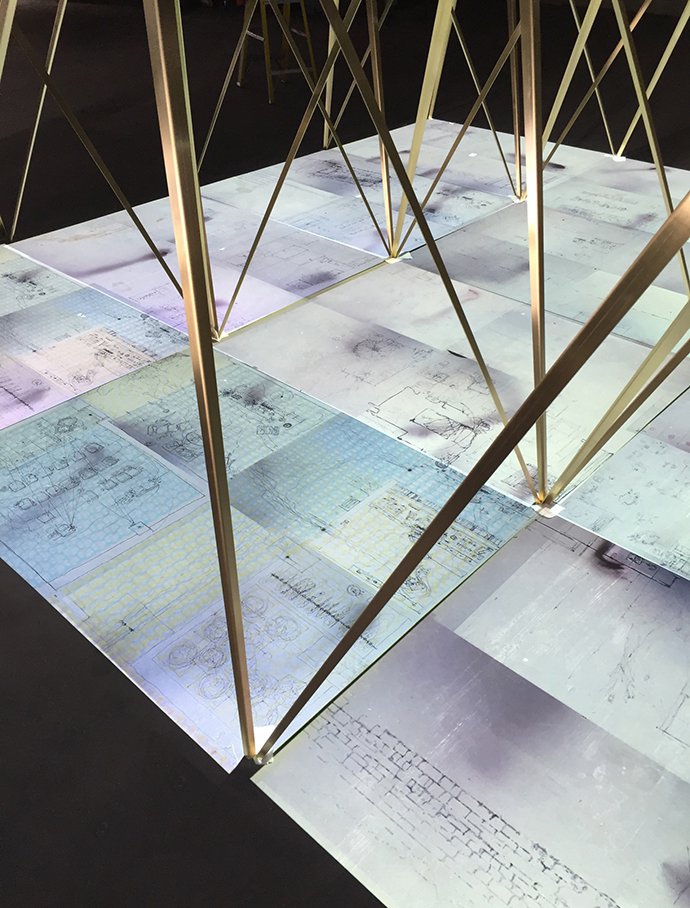
Reviewing the mock-up, the team agreed that changes were needed to help convey the story being told. This was partly because everyone had been visualising the video ‘canvas’ as a plan-view rectangle. Standing adjacent to the quadpods presented the viewer with a very different perspective. These elegant brass supports presented their own complications. In order to achieve a perfect seamless canvas, the grid of projectors had to be perfectly square: but the springy nature of brass resting on a concrete floor made this impossible.
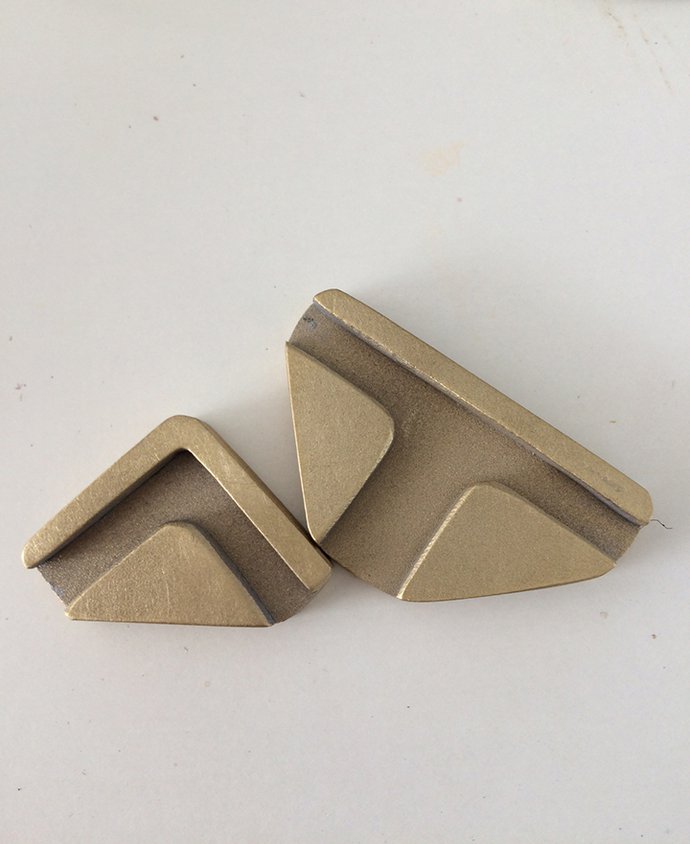
Architects departed and the mock-up was carefully labelled and dismantled. Solving the projection alignment was now the high priority. Millimetre crafted a low profile ‘foot’ that would accept 4 quadpod legs. They worked a treat, and an order was placed – with just enough time to have them machined in time to get to Venice!
On the 13th May, the shipment of all the equipment was picked up in its crate and flightcase protection and sent to Venice. It was met the following Monday by Lez Barker, Steve Holmes and Andy Coates: the technicians from ArtAV who would be responsible for the install.
On Tuesday 17th, the critical part of the process was in progress: ensuring that the precise design was millimetre-perfect within its historic setting. As is often the case with old buildings, there wasn’t a single right angle or straight line in the room! After hours of painstaking calculation and re-alignment, the plan was set and the installation proper could take place. For the next six days, the crew did their thing. Lez, who was responsible for the production as a whole, also had to solve any problems related to the mechanical and physical installation. Steve would be assisting Lez, and writing bespoke code to allow invigilators to easily and simply control the installation from their phones. Andy was in charge of the media servers and projection, making sure that every image was perfectly presented.
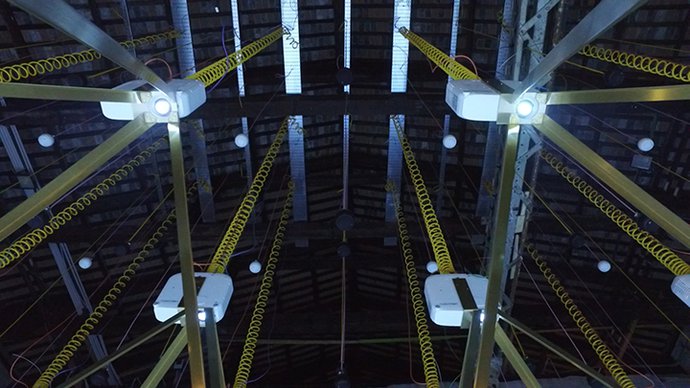
Níall and Yeoryia attended the site several times to ensure everything was going according to plan.
Kevin completed the final sound design in the room and the team transferred the audio to the servers.
A final video line-up was performed, and the main and backup media servers (along with their battery backup system) were tested. Everything checked out fine.
The moment that everyone had been waiting for had arrived: experiencing Losing Myself for the very first time.
by Nick Joyce of ArtAV